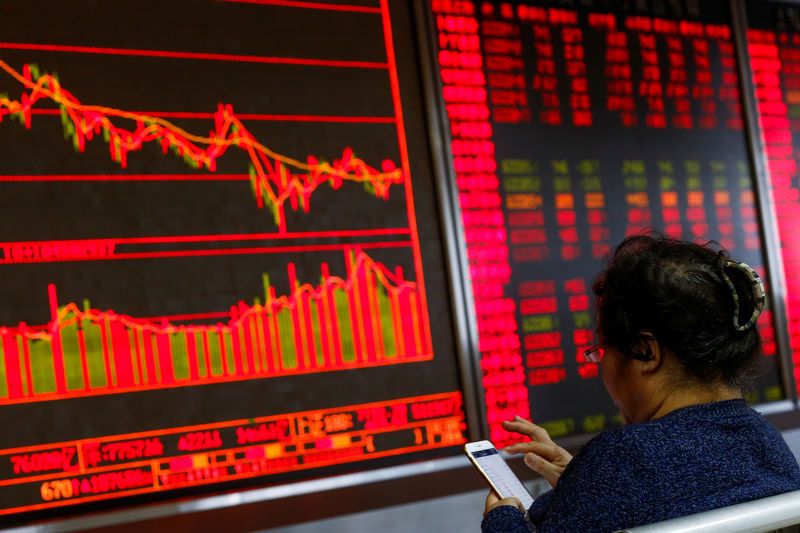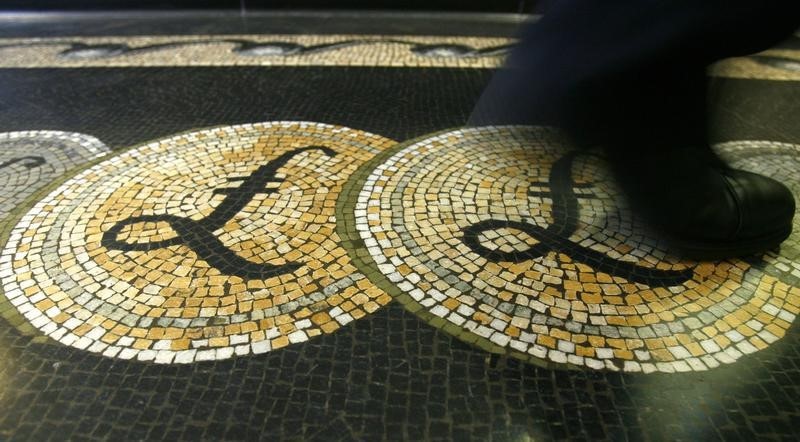By Andrew Galbraith
SHANGHAI (Reuters) - Asian shares and the pound moved higher on Thursday as investors breathed a sigh of relief after British Prime Minister Theresa May survived a no-confidence vote, and as China appeared to be taking more steps to meet U.S. demands to open its markets.
Sterling rallied from a 20-month low after the vote, and was holding onto gains early in the Asian trading day, trading at $1.2629. <GBP=>
Any respite for sterling was expected to be brief, however, as May appeared no closer to getting her EU divorce agreement through parliament, raising the risk of a chaotic exit in March.
"The fact remains that the EU is highly unlikely to offer the reassurance MPs are demanding on the Irish backstop," analysts at ING said, adding there was a risk that a parliamentary vote on the Brexit deal will not take place until later in the first quarter of 2019.
"In the meantime, the lack of clarity and elevated risk of 'no deal' is set to see economic activity slow further," they said. ING expects UK growth to halve in the fourth quarter from the third.
The euro was also higher, up 0.04 percent at $1.1375 after Italy's government offered to lower its deficit target next year to 2.04 percent of gross domestic product, below the 2.4 percent level that the European Commission had rejected as too high.
The European Central Bank is all but certain to formally end its lavish bond purchase scheme on Thursday but will take an increasingly dim view on growth, raising the odds that its next step in removing stimulus will be delayed.
The dollar index (USD=), which tracks the greenback against a basket of six major rivals, edged down to 97.020. The dollar rose a hair against Japan's currency, buying 113.30 yen. <JPY=>
In equity markets, MSCI's broadest index of Asia-Pacific shares outside Japan (MIAPJ0000PUS) was up 0.2 percent in early Asian trade after U.S. stocks finished the previous session higher, amid cautious optimism for progress in Chinese-U.S. trade talks.
Japan's Nikkei stock index (N225) gained 0.8 percent, while Australian shares (AXJO) were up 0.2 percent.
Chinese state-owned companies have bought more than 1.5 million tonnes of U.S. soybeans, Reuters reported Wednesday, in the first major U.S. soybean purchases in more than six months.
The purchases are the most concrete evidence yet that China is making good on pledges made when Presidents Donald Trump and Xi Jinping met on Dec. 1 and agreed to a 90-day detente to negotiate a trade deal.
China also appears to be toning down its high-tech industrial development push, dubbed "Made in China 2025," which has long irked the United States, according to new guidance to local governments. But it remains to be seen if Beijing will meet Washington's demands for stronger protection for U.S. intellectual property.
Beijing plans to replace the "Made in China 2025" initiative with a new one to play down China's bid to dominate manufacturing and will seek to be more open to participation by foreign companies, the Wall Street Journal reported on Wednesday, citing people briefed on the matter.
"In the scheme of things and were this to prove true, this is far more relevant than China agreeing to restart purchases of American soybeans, or even reducing the tariff on US car imports from 40 percent to 15 percent, as has been indicated in the last 24 hours," analysts at National Australia Bank said in a note.
The Dow Jones Industrial Average (DJI) rose 1.09 percent to 24,635.88 points, the S&P 500 (SPX) gained 1.01 percent to 2,663.44 and the Nasdaq Composite (IXIC) added 1.41 percent to 7,130.79. (N)
U.S. treasury yields continued to rise after steep declines as risk sentiment improved. The yield on benchmark 10-year Treasury notes (US10YT=RR) was at 2.9114 percent on Thursday, up from its U.S. close of 2.906 percent on Wednesday.
The two-year yield (US2YT=RR), sensitive to expectations of higher Fed fund rates, was at 2.7744 percent compared with a U.S. close of 2.77 percent.
U.S. crude (CLc1) rose 0.37 percent to $51.34 a barrel as trade tensions eased, and spot gold <XAU=> was slightly higher, trading at 1,245.77 per ounce on the weaker dollar.

